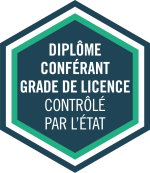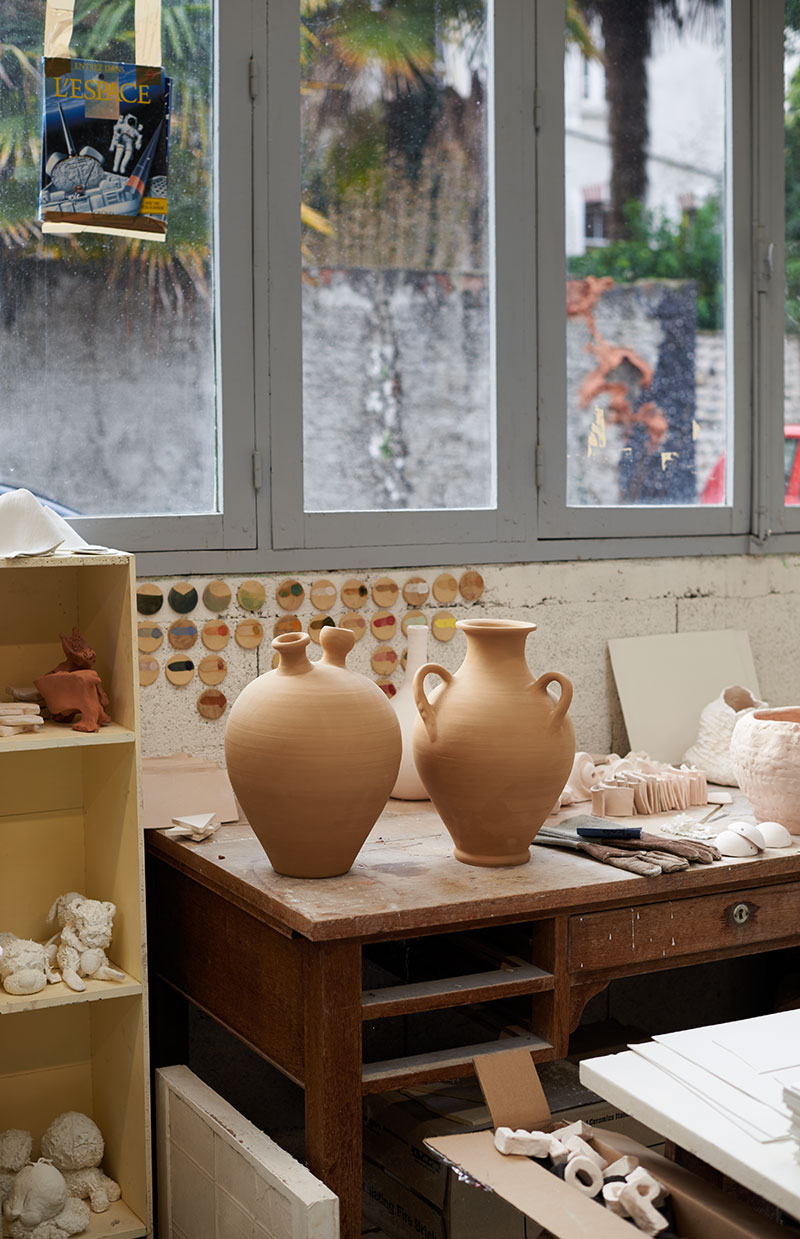Bachelor : DNA Art specializing in disruptive ceramics
The ceramic-art curriculum in Tarbes
The ceramic-art curriculum is a comprehensive program that enables students to acquire knowledge and skills related to contemporary art, with an emphasis on ceramics. The teaching team aims to closely reconcile a technical approach to the material with its place in contemporary creation.
As part of the 1st cycle, “disruptive ceramics” is an initiation full of surprises that enables students to approach the practice of the material through free experimental play.
Pedagogy
In the first cycle, students familiarize themselves with various media and materials through a specific teaching unit: studios. Techniques and media are those used in all art education: volume, wood, metal, painting, drawing, image, photography, video, sound, multimedia and IT. Particular emphasis is placed on ceramic techniques, plus screen printing on porcelain, firing, etc.
Teaching is organized into the following units throughout the curriculum (undergraduate and graduate): lectures, studios, practical/project workshops, documentary research, particularly in the library, highlights, seminars, study days and conferences.
The progress paper in the first year and the thesis paper in the third year are also an opportunity to invest in page layout and word processing software and to formulate a discourse on the work carried out.
Year 1
The first year begins with a first contact with contemporary art at a nearby exhibition or museum. The aim of the first year is to initiate one’s own work. It’s a year of experimentation which, through a common theme in the practice workshops, should enable each student to initiate an approach and defuse preconceived and ready-made ideas, in order to become increasingly autonomous in all aspects of the personal project. Two studios, where the technical dimension is emphasized, are compulsory during the year. They enable us to focus on different media right through to the third year. Each semester is punctuated by a compulsory workshop, and students are strongly encouraged to attend meetings and conferences throughout the year. Theoretical teaching is an introduction to the acquisition of essential knowledge in the fields of art history and aesthetics. A written “progress paper” is submitted in semester two. This is followed up in a specific way, and is intended to show how the student’s work has been integrated into the school over the course of the year, as well as its projection into the field of art.
Year 2
From the second year onwards, there is a strong emphasis on personal practice workshops. The workshop is regularly punctuated by hanging sessions and oral presentations in the presence of second- and third-year students, accompanied by teachers of both practice and theory. Two different studios must be attended during the year. A writing workshop (text/image) and a workshop for reading artists’ texts can be taken throughout the year, to give students a better understanding of how to develop a written document. They are open to all except the first year. A group project, supervised by the teaching staff and aimed at meeting key players in the art world, is pursued throughout the year and finalized in semester 3 or 4. Students begin to take part in introductory research project groups. Everyone takes part in workshops and conferences.
Year 3
In the third year, each student chooses a studio for semester 5, and in semester 6 reinforces a practice of his or her choice by returning to the corresponding studio. They develop and refine their research from the second year, while continuing to open up their conceptual and plastic field in personal practice workshops. Regular exhibitions are supplemented by specific appointments to monitor the “document-memoire”. Distance learning in the form of internet meetings, or even in the form of chat in its particular form of exchange and “written/spoken” language, enables the work to be approached through a question-and-answer game, and to express plastic and theoretical reflections in a different way. By offering a dynamic approach, it is an additional tool for presenting oral and written work. The year is rounded off by a compulsory internship and report.
Internship
As part of our professionalization program, the 1st cycle internship is compulsory in the first cycle and takes place at the end of semester 3, 4 or 5. It lasts a minimum of one week and a maximum of two weeks, and should, wherever possible, take place during school vacations. The internship, its duration, the location and the period are subject to the approval of the cycle coordinator or year manager. The internship is the subject of an agreement between the host organization, the student and ÉSAD Pyrénées. Two copies of the internship report must be submitted to the secretary’s office no later than one month after the end of the internship and, in any case, two weeks before the evaluation of the semester in which the internship took place.
Research paper
To obtain the Diplôme national d’art (DNA), students will for the first time confront their practice with an external jury, a test which will be accompanied by the writing of a dissertation.
The aim is to demonstrate the candidate’s commitment to the field of contemporary artistic practice, by providing an initial perspective on his or her practice - the subject of the dissertation. This writing must be able to grasp the problematic that accompanies the work; the themes that support it; the questions that inhabit it; but also the intimate, and why not, conflicting dialogues that fuel it. This passage is a moment of writing and rewriting that enables a better grasp of the student’s forms or gestures, and a perspective that can then lead his or her practice to open up to new potentialities.
The DNA research paper focuses on a written, publishable form. It is a privileged moment to understand the precise and particular world of writing. It also echoes the oral presentation of the candidate’s work and research table.


